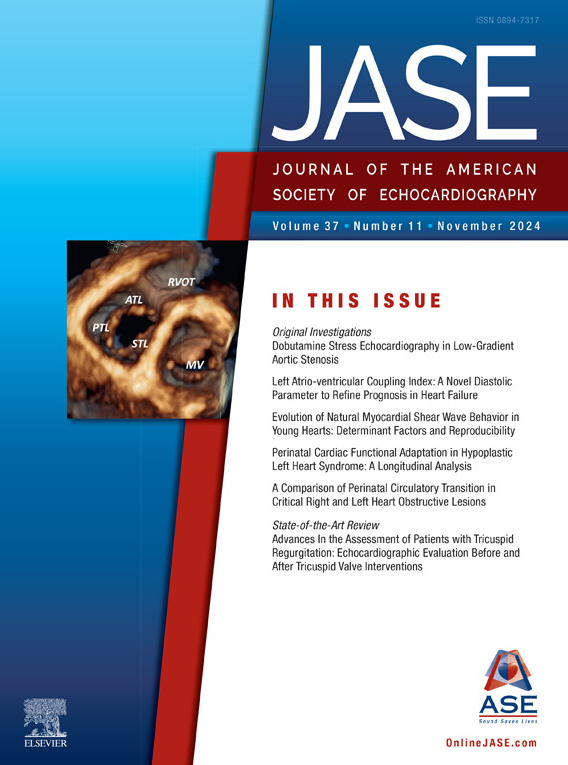The November issue of JASE includes a state-of-the-art review titled, “Advances in the Assessment of Patients With Tricuspid Regurgitation: A State-of-the-Art Review on the Echocardiographic Evaluation Before and After Tricuspid Valve Interventions.” Lead author Luigi Badano, MD, PhD, FASE, remarks, “The tricuspid valve (TV) is not merely the right counterpart of the mitral valve. It has a distinct anatomy, featuring three leaflets as opposed to two, and a more pliable annulus. Additionally, it functions in a unique hemodynamic environment, working in a volume pump rather than a pressure pump. Therefore, it requires a specialized approach and different threshold values for evaluating its severity before and after valve repair interventions. Conventional parameters used to evaluate right ventricular geometry and function may be misleading in patients with moderate to severe tricuspid regurgitation. Three-dimensional echocardiography has significantly enhanced our understanding of tricuspid valve anatomy, the pathophysiology of tricuspid regurgitation, and the assessment of right ventricular geometry and function.”
Badano, MD, PhD, FASE, remarks, “The tricuspid valve (TV) is not merely the right counterpart of the mitral valve. It has a distinct anatomy, featuring three leaflets as opposed to two, and a more pliable annulus. Additionally, it functions in a unique hemodynamic environment, working in a volume pump rather than a pressure pump. Therefore, it requires a specialized approach and different threshold values for evaluating its severity before and after valve repair interventions. Conventional parameters used to evaluate right ventricular geometry and function may be misleading in patients with moderate to severe tricuspid regurgitation. Three-dimensional echocardiography has significantly enhanced our understanding of tricuspid valve anatomy, the pathophysiology of tricuspid regurgitation, and the assessment of right ventricular geometry and function.”
This issue’s original investigations incorporate many topics including stress echocardiography in low gradient aortic stenosis, diastolic function and prognosis in heart failure, myocardial shear wave analysis in children, and perinatal cardiac function in congenital heart disease. Additionally, there are five brief research communications and three editorial comments. These reports cover diagnosing severe mitral stenosis, applying appropriate use criteria for echo in an underserved population, effectiveness of negative pressure booths in mitigating airborne infection risk during TEE, prognostic value of echo parameters of the subpulmonary LV in adults with a systemic RV, and shear wave elastography in children with a Fontan circulation. Rounding out this issue are two letters to the editor—one addresses how guidelines reinforce treatment disparities for patients with aortic stenosis and the other describes the importance of a complete hemodynamic assessment of the aortic valve.
This month’s President’s Message highlights the important work of ASE’s advocacy team as they navigate challenges and opportunities within the fluctuating economic realm of cardiovascular ultrasound.
Tune into our Author Spotlight page for interviews between JASE Editor-in-Chief Patricia Pellikka, MD, FASE, and authors of recently published papers. November’s interview features Nils Sofus Borg Mogensen, MD, discussing his paper, “Dobutamine Stress Echocardiography in Low-Gradient Aortic Stenosis.”
Please see the November ASE Education Calendar for a listing of educational opportunities far and wide.
